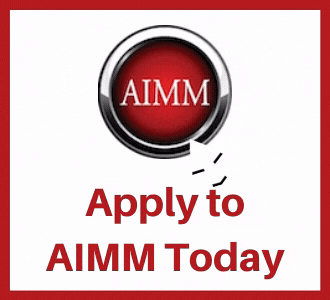The 6 Best Right Hand Bass Guitar Techniques
As a bass player, you are likely familiar with the popular right-hand techniques for mastering the bass guitar.
Whether you have a personal preference or a go-to method that feels most natural, it's crucial to have a repertoire of techniques at your disposal.
This versatility is key for adapting to various performance contexts and music genres, from jazz to metal.
Below, we'll explore the expert insights from AIMM's esteemed bass instructor, Gary Wilkins.
We'll examine essential right-hand bass guitar techniques that every bassist, from beginner bassists to advanced players, should know.
Whether you want to refine your bass finger technique, achieve a fuller sound, or simply expand your skill set, you're in the right place.
About Gary Wilkins
Gary Wilkins is the head of the bass department and has been teaching at AIMM for nearly 25 years. He has played with countless musicians, from Naughty by Nature to Whitney Houston.
Today he's going to show you different techniques on the bass with your picking hand. Check out the videos below, along with the supplemental highlight transcriptions and links for the best right hand bass guitar techniques.
Table of Contents
- One-Finger Technique
- Two-Finger Technique
- Tone and Articulation In The Right Hand
- Muting
- The Slap Method
- The Three-Finger Technique
One Finger Technique
The one-finger technique is a fundamental bass guitar practice rooted in upright bass playing.
Many upright bassists traditionally rely on a single finger for plucking the bass strings, a method that has transitioned well to electric bass playing.
This technique's primary advantage lies in its ability to produce a consistent bass sound.
When you use just one finger – typically the index or middle finger – it becomes significantly easier to apply uniform pressure across the strings.
This uniformity is key to maintaining a consistent volume and tone, ensuring each bass note resonates with equal clarity and strength.
When employing the two-finger technique, another common bass-playing technique we'll talk about in just a second, you might find yourself dedicating more practice time to achieve this same level of evenness.
Each finger has its own strength and style, which can lead to variations in the sound – one finger might naturally play louder or softer than the other.
A specific application of the one-finger technique is 'raking' the strings.
This method is particularly effective when playing double stops (striking two notes simultaneously) or articulating multiple notes together or independently.
Raking allows for a fuller sound and can add a unique, percussive quality to your bass playing.
Understanding and practicing this technique can significantly enhance your right-hand bass guitar skills, contributing to a more controlled and clean sound in your performances.
Watch the video above to see Gary perform this technique.
Two Finger Technique
Now we can talk about the two-finger technique in bass playing. This fundamental bass technique alternates between your index and middle finger when plucking the bass strings.
As mentioned earlier, achieving a consistent sound and pressure on each string is typically easier with a single finger.
Yet, as you progress in your bass guitar practice routine, you'll encounter rhythms and speeds that are challenging, if not impossible, to execute accurately with just one finger.
The beauty of the two-finger technique lies in its efficiency.
It allows bass players, whether beginners or advanced players, to handle faster tempos and more complex rhythms with less effort and frustration.
This technique forms a solid foundation in your repertoire, enabling a fuller, more consistent bass sound essential for various styles, from conventional chords to aggressive styles.
Embracing this technique early in your bass practice schedule can significantly enhance your versatility and skill as an electric bassist.
Tone and Articulation In The Right Hand
The position of your hand along the bass strings significantly influences the sound you produce.
Playing closer to the neck of the bass yields a fuller, deeper sound, characteristic of many favorite bassists in genres like jazz and blues.
As you experiment with moving your hand further from the neck towards the bridge pickup, you'll notice a transition in tone.
This shift can range from a warm, mellow sound to a sharper, more percussive sound, commonly employed by metal bassists and those favoring aggressive styles.
The subtlety of your right-hand technique plays a crucial role here.
Altering the force of your attack, whether playing with a softer touch or a more dynamic strike, directly affects the tonal quality.
This is where your finger technique, involving the use of your index and middle finger, becomes crucial.
Incorporating your fingernails into your playing can be an alternative technique for those looking to add a bit of edge or brightness to their bass sound.
This approach mimics the crisp sound produced by a guitarist's pick, adding a unique texture to your bass lines.
Don't miss the demo video above, featuring Gary's expert examples, to see these techniques in action and understand how they contribute to a versatile and expressive bass-playing style.
It's an excellent resource for both beginner bassists and advanced players looking to refine their right-hand muting technique and overall bass guitar practice routine.
Muting
Muting is a crucial bass guitar technique that produces a clean, consistent sound.
A significant portion of your muting efficacy can be attributed to right-hand technique, particularly the use of your thumb.
This approach involves following your plucking fingers with your thumb, effectively muting the bass strings to prevent unwanted resonance.
Aim to position your thumb directly beneath your fingers to execute this technique.
This placement is critical for effective string muting.
While many bass players have their thumb visibly protruding to the side, an alternative technique involves playing with your thumb subtly tucked under your hand.
This still achieves the desired muting effect, ensuring a fuller sound without the excess vibration of free-ringing strings.
Remember, the goal is to maintain control over your bass notes.
Muting is fundamental to your bass-playing techniques, contributing to a more polished and professional performance.
The Slap Method
In the '60s, there was a bass player named Larry Graham, that you may know from Sly and the Family Stone.
Larry's journey began in a church setting, where the absence of a drummer forced him to innovate.
Seeking a fuller, more percussive sound from his bass guitar, Larry pioneered what is now famously known as the slap technique, though he originally termed it 'thumping.'
This technique involves a rhythmic dance of the thumb and fingers.
Larry would vigorously strike the bass strings with his thumb, emulating a bass drum's deep resonance, and then sharply pluck with his fingers, mimicking a snare's attack.
This approach compensated for the missing drum sounds and introduced a new percussive dimension to bass playing.
To master the slap method, position your thumb over the fingerboard.
When you strike the strings, aim to play over the fingerboard.
This technique isn't just about the bass note; it's about the interaction of the strings with the frets, whether made of nickel or stainless steel, creating that distinctive metal-against-metal sound accompanying the fundamental note.
The slap method has since become a definitive technique among bass players, particularly favored by those in genres that demand a more aggressive style.
It's a testament to how personal preference and ingenuity can lead to techniques that redefine the foundation of bass guitar playing for generations of amateur and professional bassists.
The Three Finger Technique
As the bass guitar continues to evolve, with variations ranging from the classic 4-string to the expansive 9-string models, bassists are exploring more complex and dynamic playing styles.
One such advanced technique is the three-finger plucking method, which involves using your thumb, middle finger, and index finger.
This technique is handy when playing chords on the bass, a practice that has become increasingly common as bassists push the boundaries of traditional bass-playing techniques.
Understanding how to effectively use the three-finger technique is crucial, especially in scenarios where you need to provide a fuller sound.
For example, in a trio setting with just drums and guitar, you can use this technique to play chords when the guitarist takes on a solo.
This ensures the harmony remains rich and full, even in the absence of rhythm guitar.
The flexibility of this technique allows you to adapt to the needs of your band and the specific requirements of each performance.
Whether you're a beginner bassist or an advanced player, mastering the three-finger plucking technique can significantly enhance your versatility and ability to maintain a consistent bass sound.
Don't miss the accompanying video above, where Gary demonstrates the intricacies of the three-finger technique.
Learn More With Gary
As you can see, there are many techniques you can use when you play the bass guitar. If reading this article and watching the videos inspired you to pursue additional education, that is fantastic!
Why not learn directly from Gary Wilkins?
The Atlanta Institute of Music and Media offers the following programs for bass players:
- Music and Technology Associate Degree: Bass Concentration
- Online Certificate in Music and Technology: Bass Concentration
- Performance Certificate: Bass Concentration
Note: During this anxious and challenging time we currently live in, AIMM is proud to let students completely control their learning experience by choosing courses online, on-campus, or hybrid.
Click the button below and discover how AIMM can benefit your career today.











